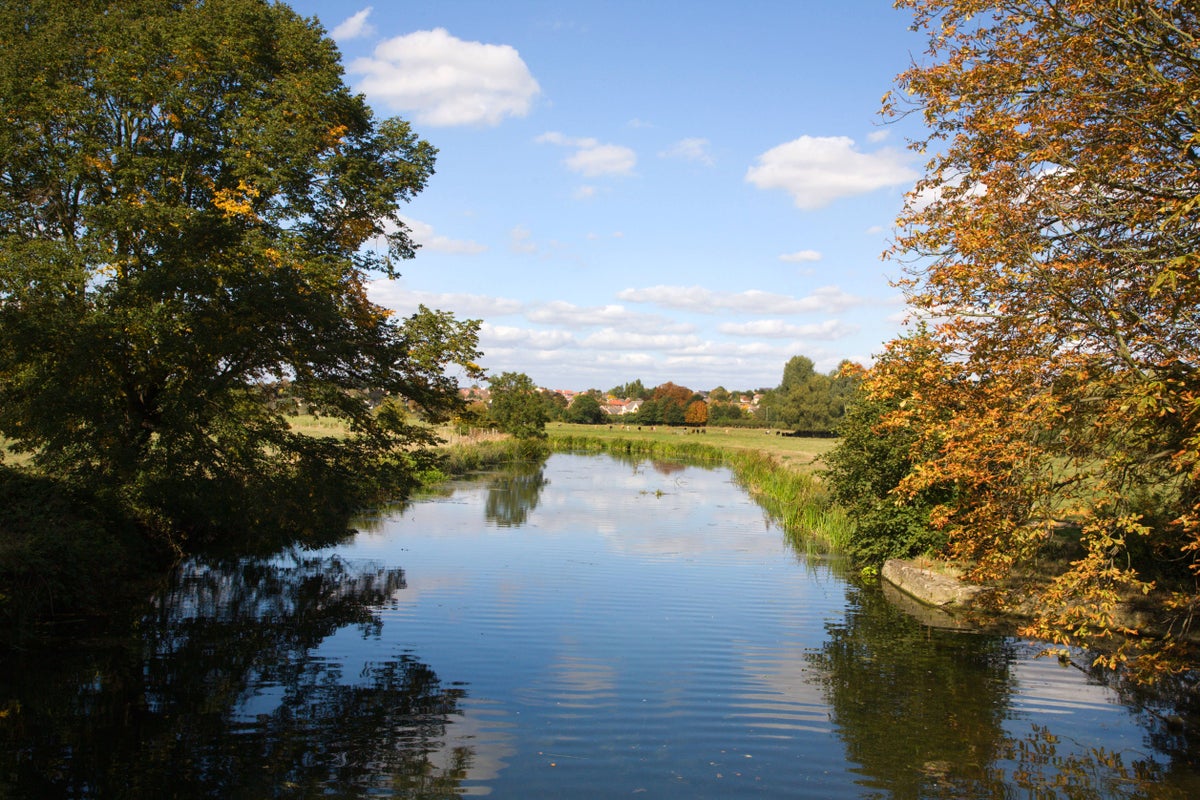
Two black bin bags of human bones found in a river contained skull fragments with 27 quite deep cuts “probably caused by a heavy-bladed weapon”, a detective has said.
But the lacerations may not have killed the man, whose remains were found in the River Stour in Sudbury, Suffolk, in August 2020.
Detective Superintendent Mike Brown, of Suffolk Police, told BBC One’s Crimewatch Live the man is believed to have died between 2008 and 2012, long before his remains were found.
The force is investigating the case as a murder and has been unable to identify the victim, believed to be a white man in his 50s or 60s and of athletic build.
What we do know through radiocarbon dating and through other forensic processes is that they were a white male, likely to be white northern European, they were probably born with blonde hair though that may have changed over time, blue green eyes, 5ft 6ins to 5ft 9ins in height and muscular or athletic build as a description— Det Supt Mike Brown, Suffolk Police
Mr Brown said: “The location, while rural, is close to the Essex borders and we worked with three hypotheses: whether or not somebody was doing building work, they’ve simply thrown the remains away to try to avoid delays; whether or not it was a family member who may have been claiming benefit fraud for a deceased relative and again something happened that meant they had to dispose of the remains; or that it could be related to organised criminality and the expertise seen in the dismemberment of the remains that we’ve got.”
The bones were discovered after a walker reported seeing the bags in the water and they were recovered by a park ranger, who called police on August 27 2020.
Mr Brown said the first bag contained what is believed to be arms, the second contained legs and there were “other carrier bags with stones and bricks that have weighed down the contents”.
He said there was a smell coming from “what we initially described as air fresheners, the type of thing you would see in public toilets to potentially block any smell” from the remains.
“The skull fragments actually were quite small in themselves so we don’t have a complete skull, but across the top of the skull in a linear format were 27 quite deep lacerations or injuries and through the post-mortem process the pathologist identified those were probably caused by a heavy-bladed weapon but wouldn’t necessarily have been the cause of death,” said Mr Brown.
He said a DNA profile of the man was loaded to local, national and international databases but a match has not been made and his identity is not known.
“What we do know through radiocarbon dating and through other forensic processes is that they were a white male, likely to be white northern European, they were probably born with blonde hair though that may have changed over time, blue green eyes, 5ft 6ins to 5ft 9ins in height and muscular or athletic build as a description,” said Mr Brown.
He continued: “The radiocarbon work we did predicted death was between 2008 to 2012.
The skull fragments actually were quite small in themselves so we don’t have a complete skull, but across the top of the skull in a linear format were 27 quite deep lacerations or injuries and through the post-mortem process the pathologist identified those were probably caused by a heavy-bladed weapon but wouldn’t necessarily have been the cause of death— Det Supt Mike Brown, Suffolk Police
“Now that’s a huge amount of time where this person, or the victim and their remains has been stored and that’s key to us is finding out where that location was.”
Mr Brown said it is believed the bags were first seen in the river seven to 10 days before the ranger was able to get them out.
“They were close to the riverbank and had stayed in that same location since they were first seen,” he said.
Police want to hear from anyone who remembers a person fitting the dead man’s description and who “maybe just dropped off the radar, maybe they just stopped seeing or thought they had moved away but had concerns for”.







